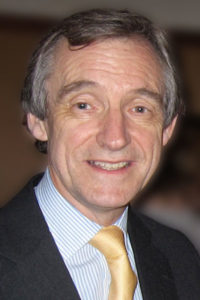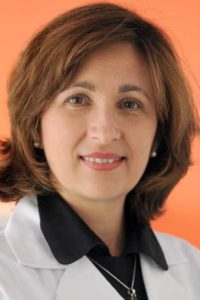
A unique symposium on Tuesday, June 7, will feature a state-of-the-art lecture addressing the title question Is it Time to Rethink Diabetes? Three presentations will follow looking at various aspects of heterogeneity in diabetes. The two-hour session, which will begin at 7:30 a.m. CT in Great Hall B at the convention center, will also be livestreamed for virtual meeting attendees.
Richard David Leslie, MBBS, MRCS, MD, FRCP, FAoP, Blizard Institute, London, United Kingdom, will set the stage with a lecture titled Diabetes Should be Rethought.
“We do need to rethink diabetes as a disease process, given that some features of diabetes are common to many forms of the disease while other features are different, illuminating the potential for different therapies to be employed based on the variable disease pathogenesis,” Dr. Leslie said. “In both type 1 and type 2 diabetes, glucose homeostasis is maintained through the relationship between insulin sensitivity and insulin secretion. Stressors can challenge that relationship, and allostasis ensures blood glucose remains within a tight normal range, but excess stress and failure to adapt can lead to beta-cell apoptosis and, with that, to dysglycemia.”
As a result, both type 2 and type 1 diabetes are subject to environmental insults, attained beta-cell mass, and developmental factors including growth, pregnancy, and obesity, Dr. Leslie said.
“Indeed, of 94 gene variants associated with type 2 diabetes, some 19 are also associated with type 1 diabetes,” he continued. “Further, while type 2 diabetes is seen as a disease predominantly of adult-onset, the same is now seen to be true of type 1 diabetes, as about 70% of cases present after the age of 20 years, often without initially requiring insulin treatment.”

Homogeneity within diabetes, Dr. Leslie said, is illustrated by similar consequences of hyperglycemia, including both microvascular and macrovascular disease, and by the similar therapies that can be used for the treatment of both type 1 and type 2 diabetes.
“In the future, marrying homogeneity with heterogeneity should help us optimize management of all cases of diabetes,” he said. “Moving forward, physicians need to resolve our increasing knowledge of the pathogenesis of the different forms of diabetes with the burgeoning armory of potential therapies.”
Among the presentations that will follow Dr. Leslie’s lecture, Maria Jose Redondo, MD, PhD, MPH, Baylor College of Medicine and Texas Children’s Hospital, will discuss the clinical heterogeneity of pediatric diabetes.
“Diabetes in children is becoming increasingly heterogeneous,” she said. “Pediatric type 2 diabetes is increasing in frequency and, as it is now recognized in adults, there seem to be distinct clusters. In type 1 diabetes, genetic, immunologic, histopathological, and metabolic studies suggest different subtypes, or endotypes.”
Dr. Redondo also noted that children may present with characteristics that make diabetes classification difficult at the time of diagnosis.
“Our ultimate goal is to understand the implications of this heterogeneity for prediction, prevention, diagnosis, and treatment,” she said. “By dissecting the heterogeneity of diabetes, we will be able to apply precision medicine and, ultimately, improve health outcomes in children with diabetes, which are currently worse than in adults.”
[sub-post-content]